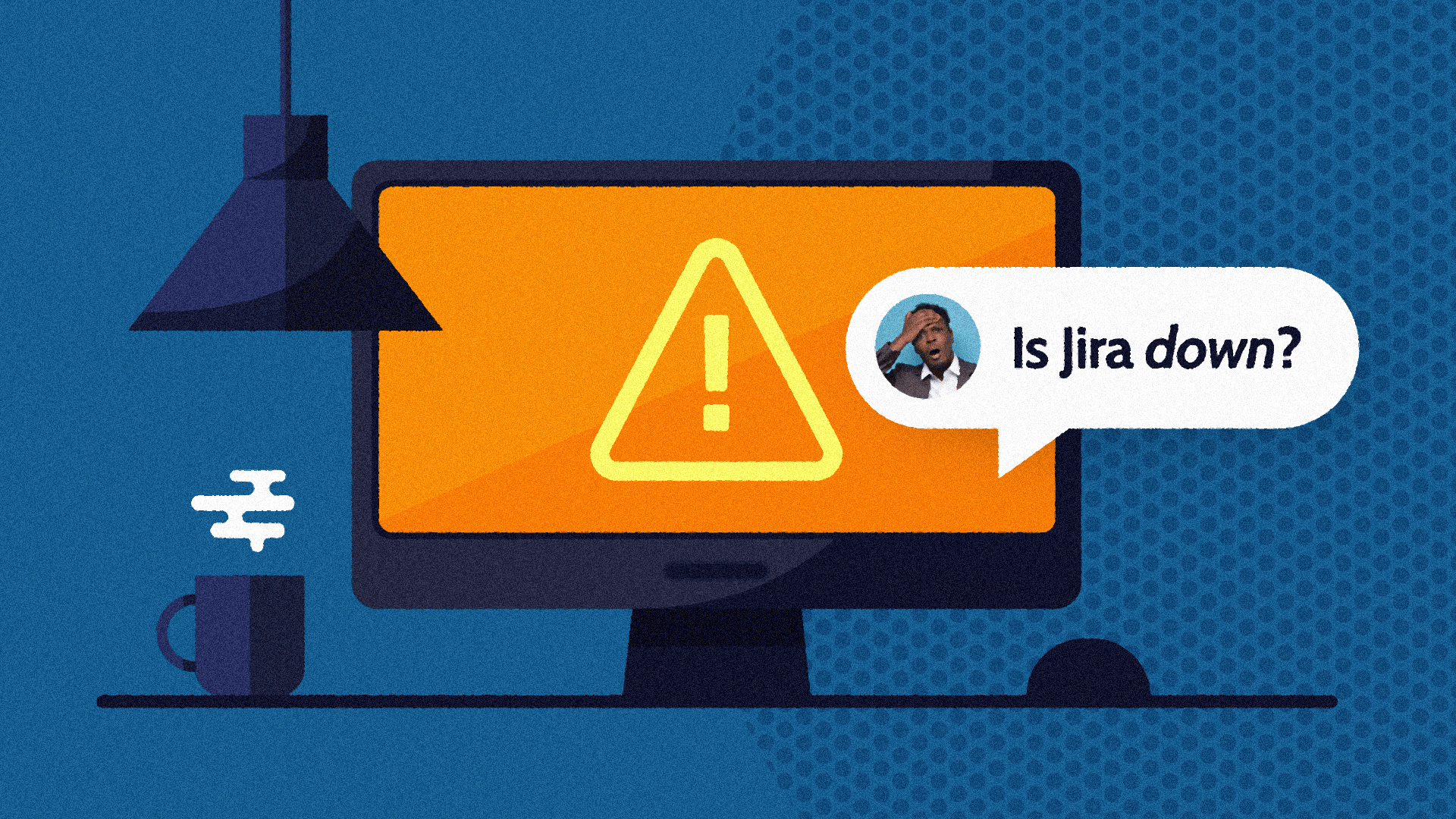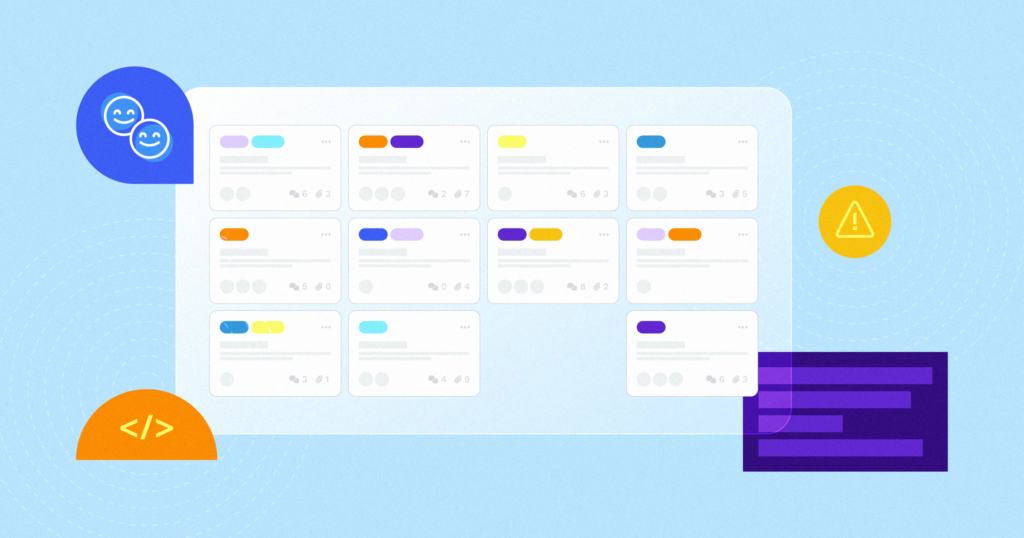Jira is an established favorite among agile project management and software development professionals. Developed by Atlassian, Jira is used and loved by thousands of customers worldwide, including digital trailblazers like Spotify, eBay, and Airbnb. It’s available as an online service (a SaaS product) and on-premises software.
Unfortunately, even the best, most stable platforms have their limitations. And when Jira is down, project managers’ and developers’ heart rates quickly start to rise! If that’s ever happened to you, you’ll understand the level of frustration a Jira outage can cause, and you’re not alone.
There’s a variety of reasons Jira might be down today. It could be a platform error or outage that’s out of your hands. It could be an innocent mistake on your part or a local system or infrastructure-related issue. Most of these scenarios are fixable or undoable – if you have a reliable backup and recovery solution for your Jira data.
In this post, we’ll take a 360-degree view of some of the most commonly reported issues with Jira, why they occur, and the steps you can take to get back up and running as quickly as possible.
What is Jira, and why use it?
Initially created as a handy tool to find and root out pesky bugs and issues, Jira has metamorphosed into a potent and dynamic work management tool. Today, project managers and software developers rely on it to track and manage their software projects (Jira supports any agile methodology, including scrum, kanban, or bespoke options.)
By deploying Jira, you can rest assured that everyone is productive and focused on top priorities and that project tasks get completed speedily, on time, and on budget.
Because Jira is super-easy to learn and use, in recent years, it’s attracted the attention of non-IT users such as portfolio managers, general product managers and owners, and marketing teams. In particular, they gravitate towards Jira Work Management (JWM) to help them accelerate and optimize business projects.
Is Jira down today? Common causes and what to do about them
The more we rely on our digital tools, the more devastating being unable to access them becomes. We want answers – fast!
Let’s explore some of the most common reasons why Jira Cloud isn’t working:
1. The Jira platform (hosted by Atlassian) is having issues
If you try to log into Jira and find that it’s down or unavailable, it could be because the Atlassian platform is experiencing a glitch. This could be related to temporary maintenance or a more complicated issue on their part.
For example, in April 2022, an ongoing outage affected numerous Atlassian customers, causing their Jira and Confluence instances to be inaccessible. When customers attempted to access their Jira instances, they were shown an error that the page was unavailable or under maintenance.
The ideal first port of call to establish if Jira Cloud is down is the Atlassian Status Page. Here, you’ll find status information for each of Atlassian’s products and services.
If it’s a universal problem, you’ll probably also find reports from other users in the Atlassian Jira Community.
Also, log into Downdetector, which offers a graphical view of problem reports submitted in the past 24 hours compared to the typical volume of reports by the time of day. IsDown is another useful downtime reporting resource to check out.
As a service provider renowned for customer service excellence, Atlassian will likely send you an email alert regarding such issues and make a public statement regarding the cause. In the case of the abovementioned outage, Atlassian said that a routine maintenance script disabled a small number of sites:
“While conducting a routine maintenance script, a small number of sites were unintentionally disabled, which resulted in them being unable to access their products and data. We know our customers rely on our products to get their work done, and we are sorry for the disruption this has caused. We are working 24/7 to restore products to full availability. Affected customers can reach out to us at https://support.atlassian.com/contact if they have any questions.”
While Atlassian strives to maintain acceptable levels of uptime within their Terms of Service, they have no responsibility for securing account-level data. Learn more about how the Shared Responsibility Model affects your data security responsibilities.
2. Jira isn’t working … but the problem is closer to home
If you consult the above resources and find that you’re the only one experiencing problems with Jira, you likely have an issue with your local infrastructure, systems, or user activity.
Here are some common scenarios:
Accidental deletion
If you’ve recently updated your Jira database, you might have accidentally deleted a file or code that your Jira instance depends on to function.
If this happens, you’ll need to restore from a backup and start the process from scratch.
Failed CSV uploads
It’s not unusual for errors like corrupted files, column-naming discrepancies, or code mistakes to occur when you do bulk uploads from a CSV file.
In such cases, the file could shut everything else down.
It’s a sensible idea to run a backup before uploading any CSV files. If the worst happens, and you have a comprehensive backup in place, you can restore your instance in a few clicks.
Incompatible third-party apps and plugins
Third-party apps and plugins are great, but they and Jira don’t always play well together. Incompatibility issues could arise, causing your Jira instance to malfunction or fail.
Specifically, plugins can consume the database connection pool (often called DBCP) and memory (heap usage) and slow down issue operations. Start by disabling plugins and see if you still experience performance problems. You can do this by enabling Safe Mode in the Universal Plugin Manager (UPM) to verify whether or not a plugin is a problem. Bear in mind that this will likely reduce your instance’s functionality.
Note: Atlassian does not provide support for third-party plugins. If you’re still experiencing problems, visit the Atlassian Marketplace to find the plugin developer’s details and contact them directly, or raise a question on Atlassian Answers to appeal for help from the Atlassian community.
While investigating potential plugin issues, you can stay productive by restoring your Jira instance from a reliable backup.
3. Performance issues
Performance issues in Jira are multi-faced and might include the following:
Browser-related problems
The source of your woes could be as simple as your browser experiencing a temporary performance problem. Try using a different browser to see if there’s any difference in response times. If the problem persists across browsers, it likely points to client-side, server-side performance.
For further assistance diagnosing problems, take a look through Atlassian’s Troubleshooting Client-Side Browser Problems.
At-capacity, overused instance, or other server issues
There are various possible root causes for server issues, and they often depend on your database stats (issues, custom fields, workflows, users, and security schemes) and your Jira application version.
Send a Support ZIP to Atlassian Support, and they’ll provide you with some basic recommendations. You may need to perform a server upgrade if the instance is too large for your version.
Analyzing your access logs with the Jira HTTP Requests Log Analyzer is a quick way to diagnose if your instance is overloaded.
Disk speed
Poor disk I/O can result in poor performance associated with searches, gadgets, and 10+ attachments. If you suspect this might be your problem, test your disk speed with the utility and instructions from Atlassian’s Testing Disk Access Speed tool and compare your results with the good/bad/average ranges.
Whatever the performance issue, a backup solution will allow you to troubleshoot without losing hours or even days of productivity.
Jira backup options
As we’ve explored, most Jira issues will pass (once the Atlassian platform is restored) or can be easily mitigated (once you troubleshoot local hardware, system, or application issues.)
But, the fastest and most reliable method of ensuring your Jira data is available is an in-house backup and recovery process. Let’s look at your options for backing up and restoring your Jira cloud:
Jira Backup Manager
Jira’s Backup Manager is Atlassian’s backup solution for Jira. It supports manual exports as frequently as every 24 hours. Backup coverage includes pages, users, and attachments. However, storage for backup snapshots is your responsibility. You must save and version these in your own environment at your own expense.
You can perform backup using automation scripts, but you’ll need to invest engineering time to develop and maintain them as Atlassian doesn’t provide them. Another limitation is that backups with attachments can only be exported every 48 hours with Jira Backup Manager.
Finally, while Backup Manager supports restores as imports, they can only be done on an account-level basis. Item-level restores aren’t supported, and your restores need to be initiated manually.
Jira has been developing another command line interface-based backup and data recovery solution. However, it’s currently in an Early Access Phase for testing purposes only, and Atlassian has specifically stated that it’s not to be used in production environments.
Rewind Backups for Jira
Rewind Backups for Jira is a managed service that automates daily backups with advanced data recovery capabilities. It offers one-click account recovery and granular, item-level restores. This means you can recover from human errors; disasters and outages; hardware, system, and application failure/incompatibility issues; and any other type of data loss scenario in a few clicks.
Setup takes only a couple of minutes on the Atlassian marketplace. Backups and restores include comprehensive data coverage for items on Jira Cloud, Jira Service Management, and Jira Work Management, including pages, spaces, attachments, comments, templates, themes, and more).
Learn more about Jira Backup Manager vs. Rewind Backups for Jira in our comprehensive summary.
What to do when Jira is down: summing up
For many good reasons, Jira is a popular favorite among modern software development and project management teams. But like anything in life, it’s not infallible.
If your Jira data is unavailable, whether it’s a disaster scenario or a smaller mistake, waiting around for the problem to be fixed is a waste of your team’s resources (not to mention extremely frustrating). A reliable backup and recovery process ensures you always have access to the information driving your business.




